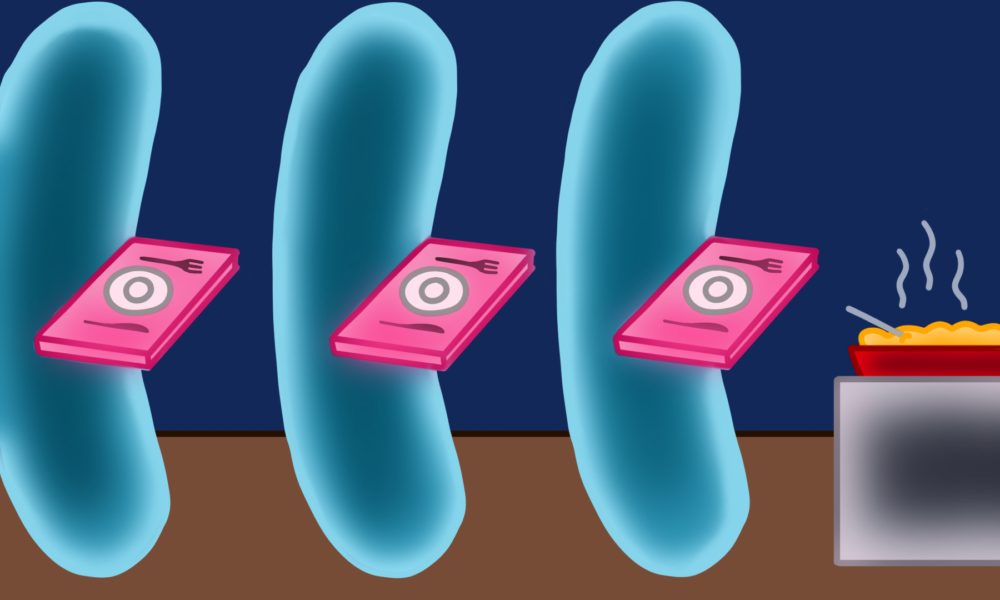The deep ocean—at least 200 metres below sea level—is home to an organic carbon pool comparable in size to the atmospheric carbon reservoir. This carbon pool has remained consistent in size for millennia. If just one per cent of the deep-ocean carbon were released in the atmosphere through microbial respiration, it would equal a year’s worth of human greenhouse gas emissions. Yet, the mechanisms that keep this carbon stable for so long remain unknown.
During his postdoctoral fellowship at the McGill Geomicrobiology Lab in the Department of Earth and Planetary Sciences, Richard LaBrie and his collaborators investigated whether bacteria in the deep ocean are too starved to decompose dissolved organic carbon (DOC), offering an explanation as to why the carbon pool has not shrunk.
LaBrie’s hypothesis relates to the priming effect, which was introduced in soil science a century ago.
“The priming effect is the addition of simple or moderately complex organic molecules that help microbes degrade more [persistent] carbon that would not be degraded otherwise or within [a given] context,” LaBrie said in an interview with The Tribune.
The addition of exogenous organic compounds makes it easier for microbes to eat their lunch.
To test his hypothesis, LaBrie collected water from 2,500 metres deep in the Antarctic Ocean and added different compounds separately to the samples: Glucose; amino acids, a substitute for dissolved organic nitrogen; glucose 6-phosphate, a substitute for dissolved organic phosphorus; and a mix of amino acids and glucose 6-phosphate.
“Nitrogen and phosphorus are both very important for microbial growth, [so] we thought that they could also help bacteria break that energy barrier,” LaBrie explained.
At several time points, the researchers analyzed DOC, cell abundance, and the microbial community composition in water.
Surprisingly, they found no evidence of the priming effect, as bacteria did not degrade the deep seawater DOC after the addition of exogenous carbon sources.
“The addition of [the organic carbon] compounds did not bring the carbon below the background level, but we did find some very interesting results,” LaBrie elaborated.
Contrary to expectations, glucose 6-phosphate was the least usable carbon compound, even though phosphorus is usually the most limiting nutrient—meaning the essential nutrient—in the deep ocean.
“In contrast, it was the amino acids that were first consumed and resulted in the highest increase in cell abundance,” LaBrie added. “So, there was maybe a larger limitation in nitrogen than in other compounds, like phosphorus or pure carbon.”
The microbial community composition analysis further revealed that different microbes consumed DOC under different treatments. They also found evidence of competition between two microbes in the amino acid and glucose 6-phosphate treatment.
“We think these types of relationships between microbes are important for deep ocean cycling,” LaBrie said.
A limitation of the experiment is that it only tested simple carbon molecules. To build on this work, LaBrie plans to do another priming effect experiment in the St. Lawrence estuary. This time, he will add more complex carbon compounds to deep-estuary water samples.
“When the molecules are more complex, the microbial communities need to produce enzymes to cut these molecules down before they can consume them,” LaBrie said. “By producing these enzymes, they could also break down more complex molecules that are in their vicinity, […] [degrading] what is already present in the ecosystem.”
The findings have implications for geoengineering, a branch of science that explores approaches to counteract climate change. One of the most studied geoengineering techniques is the enhancement of ocean primary productivity. This inevitably results in some of the carbon made by producers sinking into the deep ocean and contributing to the carbon reservoir, keeping carbon away from the atmosphere.
If the priming effect is absent, as LaBrie’s findings suggest, then the persistent deep-ocean carbon will not be released into the atmosphere, even with the addition of DOC produced by primary producers. As a society, it is our role to determine whether such geoengineering technologies are ethical.









